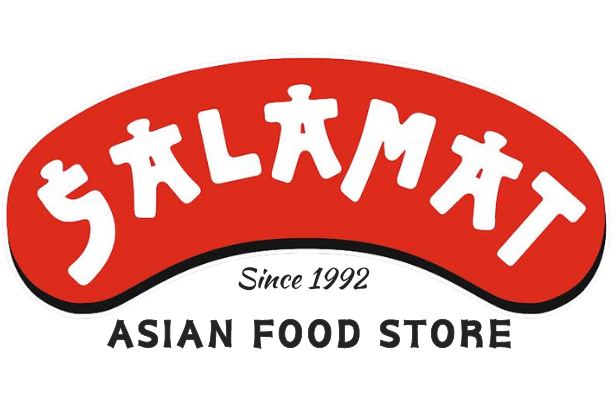The right Wok for you!

One of the most versatile cooking pans in the world, the simple design of woks originated in China and is now used the world over.
A wok is a deep, bowl-shaped frying pan with sloping sides that distributes heat evenly. This occurs because of the concave shape with sloping sides, as well as the material used to make woks. With better heat distribution you receive fewer hot/cold spots and ensure that everything in the wok finishes cooking at the same time. Also, because of its shape, tossing food such as stir fry is easy.
While most commonly used for stir-frying, a wok has many uses. Since it is deep it can be filled with water and used to boil foods or filled with oil for deep frying. When paired with wood chips and a rack, a wok can be used as a smoker for meats and cheeses. If you have a lid for the wok, then it can also be used for steaming vegetables or seafood.
A wok gets wickedly hot when you have a good flame going. They reach very high temperatures. Don’t start a fire, but don’t be afraid to heat that thing up, either! You’ll see many of recipes direct you to heat your carbon steel wok until it is “just smoking.”
It’s this high heat searing that gives Chinese food that indescribable, flavorful edge known as wok hei or wok hay—the “breath of the wok.” Wok hei is the main reason, aside from the odd dash of MSG, that people say restaurant food tastes so much better than home cooking. If you like wok hay flavor, don’t be tempted to get a non-stick model.
There are two types of woks: Cantonese and Mandarin. The best wok style for your kitchen depends on the applications you will use it for.
Cantonese woks come with two U-shaped handles riveted on either side, making them easy to lift and transport. However, the short handles don't aid easy flipping during the cooking process. Cantonese woks are best used for serving large quantities of food to groups.
Mandarin-style woks feature the distinctive round-bottom shape of a wok with a single long wood or metal handle attached to one side. This handle is there to make it easier to flip popular dishes like stir fry. It also lets a chef easily portion out food after it's cooked.
The rounded bottom of a Mandarin wok is usually quite a bit deeper than a Cantonese-style wok.
Are flat bottom woks worth it?
Between the flat bottom Wok and the round bottom Wok, the flat bottom Wok might be the better option, thanks to its versatility and its stable bottom. Chinese cooks may prefer the round bottom Wok due to its higher heat threshold, but this type of Wok only works on a gas stove.
1. Carbon Steel / Iron Woks
Carbon steel and Iron are two of the most popular materials for woks. They combine fast and even heating with durability, making them a favorite of many chefs. With proper seasoning, a good chef can easily reduce the chance of food sticking to the pan. Carbon steel and iron pans work with wok induction ranges.
2. Cast Iron Woks
Cast iron is extremely durable and is capable of holding onto heat longer than other cookware materials; once it is hot it stays hot for a long time, saving energy. The longer it is used the more seasoned it becomes, making it more non-stick as it ages.
3. Non Stick woks
Teflon coated or non-stick woks are very commonly found. The attraction is the non-stick cooking surface, easy cleanup, and the fact that no wok seasoning is required. Deep frying in a non-stick wok is not recommended, because oil residue may cling on the non-stick surface through repeated usage, and we all know that scrubbing is a big no-no for nonstick surfaces.
How do I select a wok that works best for me and my kitchen?
Generally, the biggest consideration is the type of stove you have. Gas? Go for a round-bottomed wok with a wok ring. Electric? Go for a flat-bottomed wok. Induction stoves will also work nicely with carbon steel.
Seasoning your cast iron or carbon steel wok creates a patina. A seasoned wok will help infuse flavors into the dishes cooked inside, as well as provide a smooth non-stick surface. Without first seasoning your wok, any foods cooked inside will likely stick and won't have lots of flavor. A patina is a protective coating inside of the wok. The coating helps prevent corrosion and rust, while simultaneously enhancing the flavor of the food cooked in your wok. Every time you cook with oil in your wok, the patina becomes thicker and heavier, creating a natural, non-stick cooking surface.
- Cook, saute, and fry often to continuously build a patina
- Invest in a bamboo wok brush, wok ladle, and wok spatula
- Don’t steam, boil, or poach products in your new wok
- Avoid cooking with acidic products in a newly seasoned wok, including tomatoes, vinegar, and lemon
- Don’t use abrasive pads or any warewashing chemicals, including soaps and sanitizers
Best Oil for Wok Cooking
You must select an oil with a high smoke point when cooking with a wok. These are oils that require a high temperature (around 400 degrees Fahrenheit) before they begin to smoke (aka burn). Using a low-smoke point oil risks burning your oil and tainting the flavor of the entire dish. Below are some common good and bad oils to use with high heat wok cooking.
Best : Soybean Oil - Canola Oil - Refined Peanut Oil
Not so Good : Flaxseed Oil - Unrefined Sesame Oil - Extra Virgin Olive Oil
